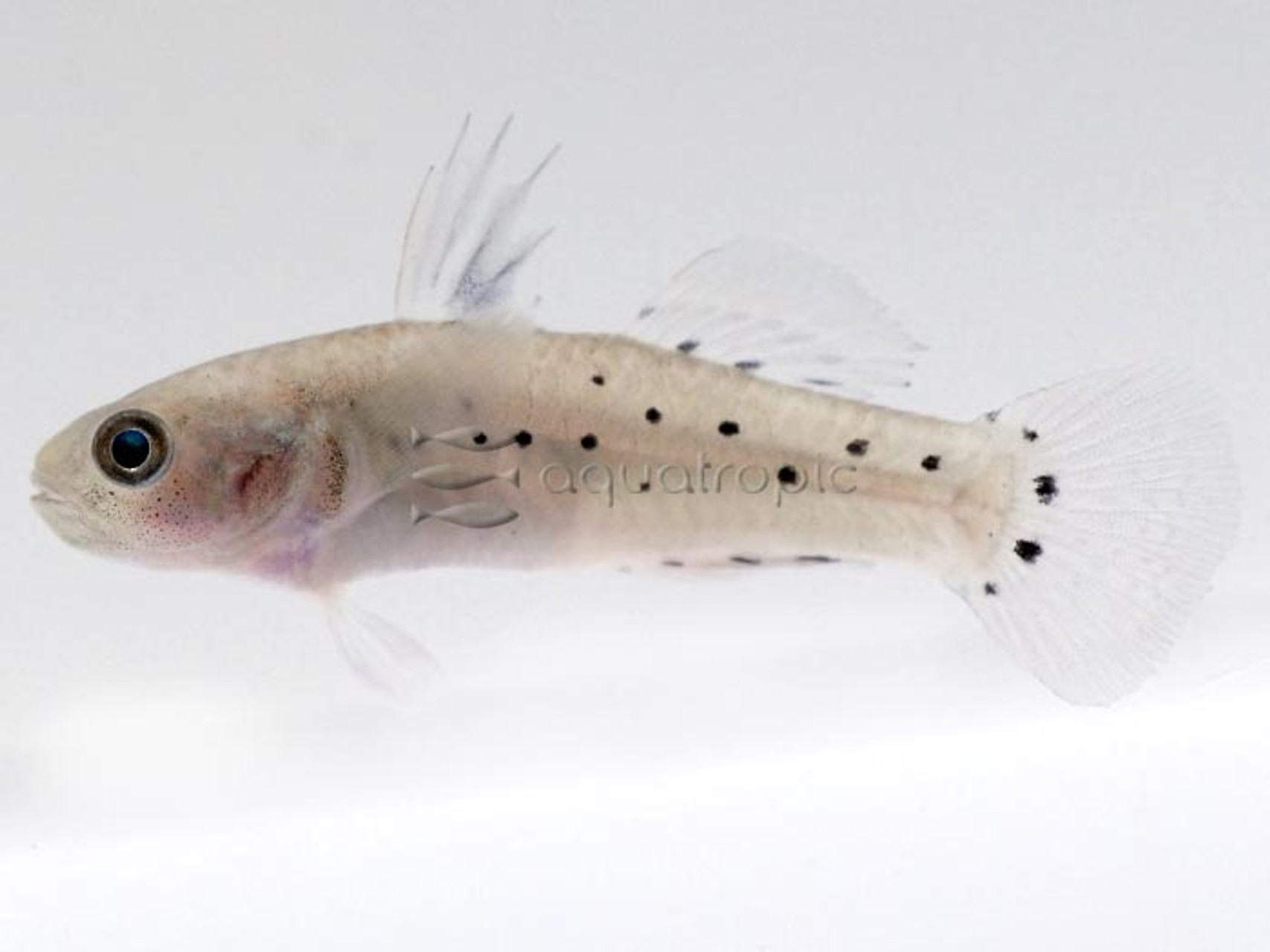Knight Goby (Stigmatogobius sadanundio)

Knight Goby (Stigmatogobius sadanundio)
It’s not terribly clear how it came to pass that the small and relatively demure Stigmatogobius sadanundio was christened as the Knight Goby. What chivalrous good deeds has this species done to warrant such a lofty name? What aquatic steed has it ever ridden into combat? What jousts has it ever won? What courtly love has it ever known? Aye, what has this diminutive peppered beast to do at all with the concept of knighthood. We may never know why our dear Stigmatogobius became knighted, but this is of relatively little concern for most aquarists.
Like so many of the freshwater gobies available in the aquarium trade, the Knight Goby comes to us from estuaries—habitats where the fresh waters of rivers and streams meet the saline environment of the ocean. Here, the waters are of a variable and intermediate salinity (known as brackish), and a unique aquatic fauna has developed which is highly adapted to thrive in this mercurial niche. This is of obvious relevance when it comes to the successful husbandry of fishes from these communities, as a touch of salt can oftentimes be the difference between a long healthy life and an abbreviated one. For the Knight Goby, anecdote states that it too fares best with a low salinity (1.005), but it is also known to do fine if kept in reasonably alkaline water. In fact, though it is reported from estuary habitats, it is said to actually be found most reliably in freshwater areas. To be avoided are acidic and soft waters, which have the potential to stifle this fish longterm.
Growing to little more than 3 inches in length, this species makes for an unusual addition to a smaller community aquarium. It will learn to accept most any food offered—be it dry or frozen or live—so long as it is meaty. Multiple specimens can be housed together if the accommodations are large enough and adequate hiding spaces are provided in the form of rocks or other decorations. Males tend to be slimmer-bodied and greyer and typically develop a more exaggerated dorsal finnage. Both sexes otherwise show similar markings across the body, particularly the small black maculations and the prominent bluish blotch present at the base of the dorsal fin. Successfully breeding the Knight Goby is a rare accomplishment, but a pair can be expected to spawn if provided with suitable conditions. But, even if kept singly (as most aquarists tend to do), this delightful little oddball makes for an intriguing addition which will spend its day skulking about every nook and cranny it finds to its liking.